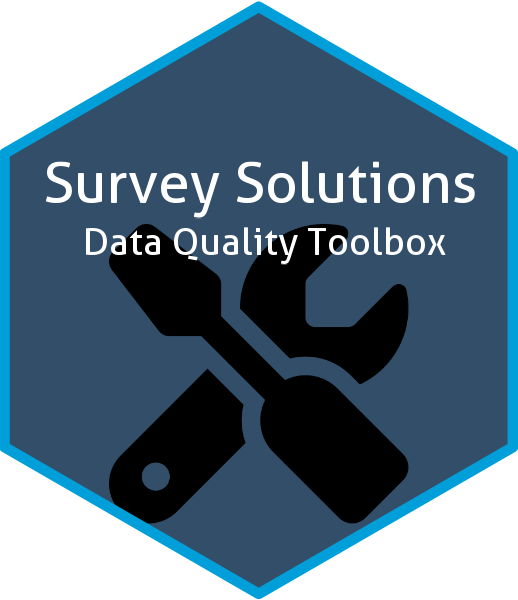The Survey Solutions Paradata Viewer Application1 is part of a comprehensive toolkit designed to enhance the process of survey implementation through Survey Solutions. The underlying application allows you to visualize Survey Solutions paradata, at the questionnaire, the interviewer and the geographic level.
Key Features
Visualization at the questionnaire level: Review a questionnaire’s average time profile, average timings and number of invalid questions.
Visualization at the interviewer level: Review average completion times, average pace and number of response removals at the level of the interviewer
Visualization at the geographic level: Review average completion times, average pace and number of response removals by geographic regions2. Visualization is either through a mapdeck (requires an API key) or a leaflet map.
-
Admin Interface: This intuitive interface lets you:
- Directly connect to your Survey Solutions server to load the paradata.
- Specify the time interval when new data should be downloaded.
-
Flexibility in data input: Data can be provided as:
- File upload.
- Directly from the server through the API.
- From a local directory.
Download the data: The application also allows to dowload the data in a more convenient format and by event type.
Direct review of interviews/interviewers: Allows you to directly connect to the Survey Solutions server and review interviews and interviewers.
-
Report creation: Generates a full paradata report as a word document at the:
- Questionnaire level,
- Interviewer level,
- Map level3.
Installation
Install R: https://cran.r-project.org/mirrors.html (version 4.1.1 or greater)
Install R Studio: https://rstudio.com/products/rstudio/download/ (version 1.2.5001-3 or newer)
Make sure the devtools package is installed, if not install it with:
install.packages("devtools")- After that install the actual package:
devtools::install_github("michael-cw/susoparaviewer")Running the application interactively
You can either run the application interactively:
library(susoparaviewer)
susoparaviewer::runParaApp()Running the application on a Shiny Server
…or run the application on your own shiny server. In this case, create a directory, i.e. susoparaviewer and put a file called app.R with the following code into it:
library(susoparaviewer)
susoparaviewer::runParaAppServer()Attention - Potential issue with ‘shinyalert’
There’s a known issue with the ‘shinyalert’ package from Dean Attali, which may cause the application to fail during start-up on certain Windows installations running the latest version of R. For more details, please check this issue.
This issue has been resolved in the development version of ‘shinyalert’, but the fix is not yet available in the official CRAN release. If you encounter this problem, please install the development version for ‘shinyalert’ using the following command:
devtools::install_github("daattali/shinyalert")EXPERIMENTAL OPTIONAL FEATURE: GPSLogger tracking
The application also contains an optional feature, which allows you to track enumerators during fieldwork. This may be useful for example when you conduct a pre-survey listing of household units, where coverage of area sampling units is important. To use this feature two prerequisites are needed:
- The GPSLogger application, which is an open source, lightweight GPS logger.
- A PostgreSQL database with the logging data stored in the following gpslogger table:
- lat double precision Latitude
- long double precision Longitude
- id text user id included in the url
- aid text android id
- time text time
- acc double precision accuracy
- bat double precision battery percentage
You can either set this up in your own way, or use the NiFI based solution for which you can find the template in the NIFI-GPSLogger-with-SSL repo. The latter also contains to bash scripts to set-up NIFI as well as the required PostgreSQL database on Ubuntu 22.04. Nevertheless for both cases, you should know what you do, and be in compliance with local labor and privacy regulations.
However if you decide to use this feature, then you need to provide the required PostgreSQL database connection details when starting the app.
You can either run the application interactively:
library(susoparaviewer)
susoparaviewer::runParaApp(useTrackingPass = [yourinapptrackingpass],
trackServer = "10.10.10.10",
trackServerPort = 5432,
trackServerDB = "gpsloggerdb",
trackServerUser = [yourPGuser],
trackServerPass = [yourPGpassword],
trackServerTable = "gpslogger")With the useTrackingPass password you can restrict access inside the app. For the server option, the command would then look like this:
library(susoparaviewer)
susoparaviewer::runParaAppServer(useTrackingPass = [yourinapptrackingpass],
trackServer = "10.10.10.10",
trackServerPort = 5432,
trackServerDB = "gpsloggerdb",
trackServerUser = [yourPGuser],
trackServerPass = [yourPGpassword],
trackServerTable = "gpslogger")Automatically create configuration files for your team
In addition to monitoring fieldwork activities, the app also includes the option to generate GPSLogger configuration files either for all enumerators on the Survey Solutions server or for selected teams. For details see the corresponding vignette.
